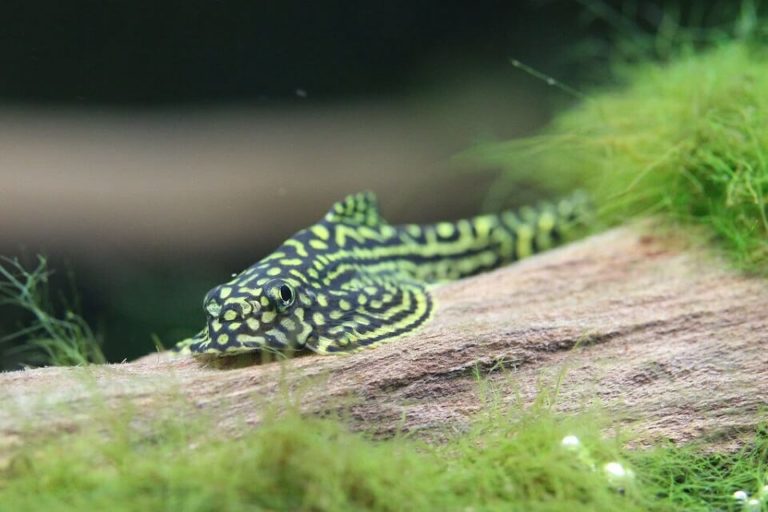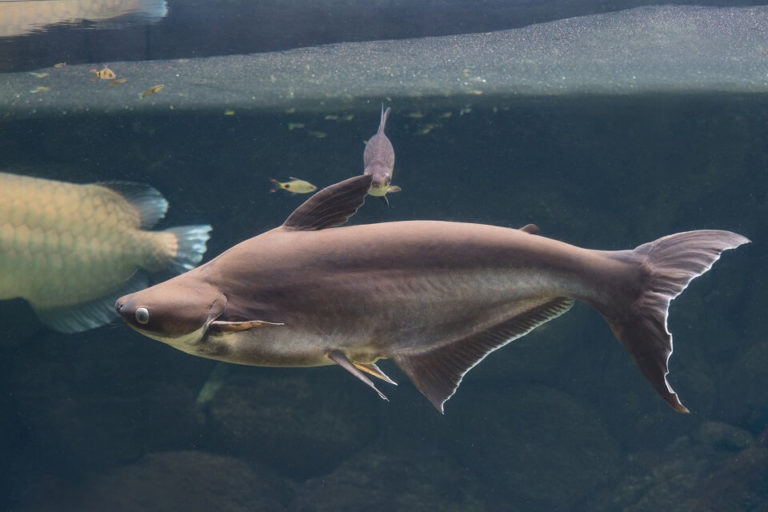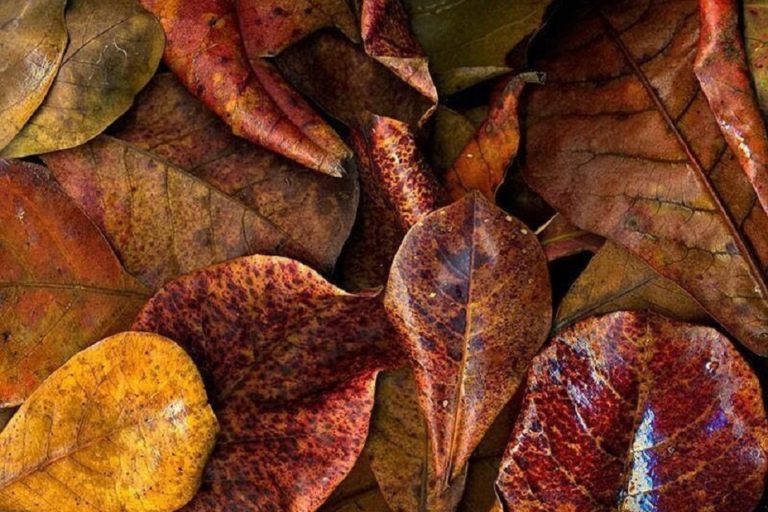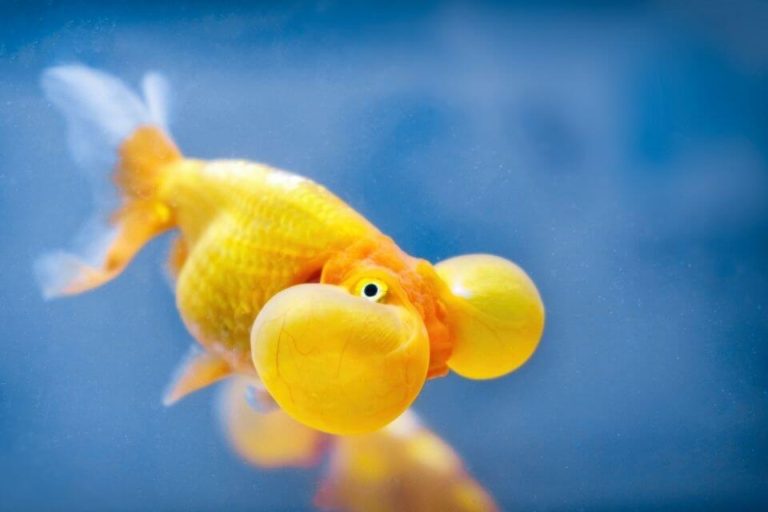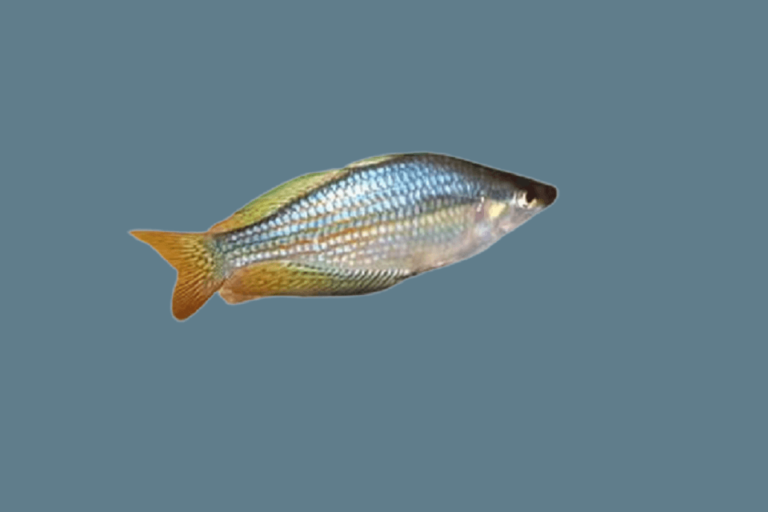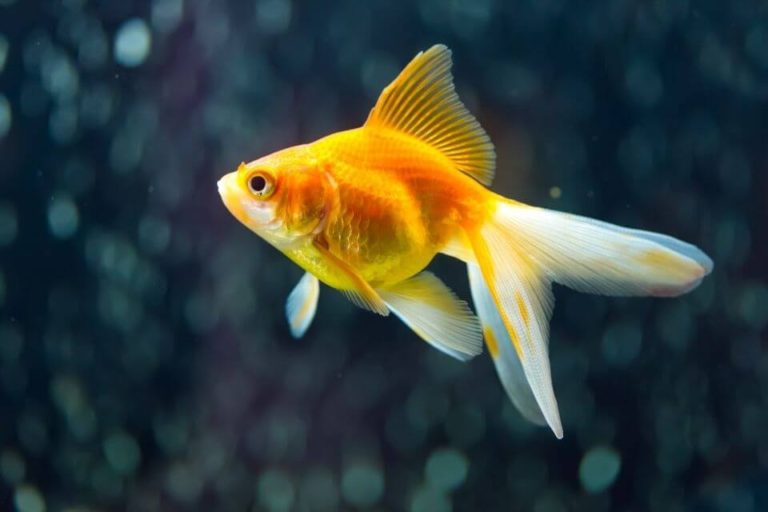Ember Tetra Care – Lifespan, Size, Food, Tank Mates, Tank Size

Ember Tetra is a small, vibrant freshwater fish that is popular among aquarists. People looking for aquarium fish should aim of having it in their fish tanks. The best part about these species is that they are easy to take care of and stunning to look at.
Their peaceful nature makes it viable for them to be kept together with other tank mates as they keep to themselves and do not bother other fish in the aquarium.
In this Ember Tetra care guide, you will learn about all the tips and tricks for caring for them in your fish tank.
| Quick Facts: | |
|---|---|
| Common Names | : Ember Tetra, Fire Tetra, Red Tetra |
| Scientific Name | : Hyphessobrycon Amandae |
| Family | : Characidae |
| Origin | : Araguaia river basin of Brazil |
| Care Level | : Easy |
| Lifespan | : 2 - 4 Years |
| Average Size | : 0.6 - 0.8 Inches |
| Diet | : Small invertebrates and plants |
| Breeding | : Egg Layer |
| Social | : Active Schooling Fish |
| Temperament | : Playful, Non-Aggressive |
| Minimum Tank Size | : 10 Gallons |
| Temperature | : 73 - 84 °F (23 - 29 °C) |
| Water Hardness | : 5 - 17 dGH |
| Water pH Level | : 5.5 - 7 (6.6 is best) |
Overview Of Ember Tetra
Ember Tetras are scientifically known as Hyphessobrycon Amandae. Sometimes they are called Red Tetra, Red Dwarf Tetra, and Fire Tetra. These vibrant fish species are small, fresh water and tropical fish from the Characidae family.
They thrive in slow-moving waters such as rivers, streams, and lakes, mostly in Central-Western Brazil.
Since the natural habitat of these species can easily be replicated in a fish tank, they are bred in large numbers to make available to aquarists in other countries.
Because of its bright appearance, this fish species has become a favorite among fish keepers. Their natural habitat consists of thick vegetation, dark and slow-moving water. The vegetation provides the fish with hiding and breeding places.
Irrespective of their small nature, these fishes are active swimmers and move around in a group. They have a lifespan of 2 to 4 years. And some claim that some fish can live over 4 years old when provided with optimal tank conditions.
However, it remains to be proved and is still in debate. Ember Tetras are easy to take care of, but like every other fish, they need quality care and outstanding living condition to survive even beyond their life expectancy period.
Failure to take good care of your fish will most likely result in death.
Ember Tetra Typical Behavior
This vibrant and fiery fish comes from a heavily forested and green forest, which usually serves as a safe spot and breeding ground for Ember Tetra while out in the wild. Although they are small and keep to themselves, they are not timid as they are quite playful.
They are fast swimmers and active, and most of the time, you will find them in the upper or middle part of your tank. You will also find them playing through the vegetation or hiding in them.
This species takes time to adapt to a new tank; thus, you may find them being overly cautious or acting strange. Do not be alarmed because, with time, they will get used to the tank. This fish is a schooling fish therefore, you must introduce over five in your tank.
It helps in reducing the time that they take to get used to a new aquarium. Also, they are more stunning when in a group.
Ember Tetra Lifespan
The average Ember Tetra lifespan is about 2 to 4 years. At the same time, some claim that they can last over 4 years, which is still up for discussion. But if you want to extend Ember Tetra lifespan, you’d better create a conducive habitat and maintain regular care.
Ember Tetra Size
The average Ember Tetra size is approximately under 1 inch in length and about 0.8 inches. Although in some rare instances, you can find Ember Tetra size that has grown above 1 inch. This could happen in optimal care conditions.
Appearance and Colors
The quality of water also significantly affects their health and lifespan and increases the number of aquarium plants. These Tetra species live in a heavily forested tank lives longer than those in a tank with sparse vegetation.
You may wonder, are aggressive or not. No, these species are relatively peaceful and non-aggressive because of their small size.
They also keep to themselves, therefore do not add any other type of fish, hoping to keep them company. Instead, add more fish if you have ample space in your tank.

Their stunning colors are the primary reason they are popular among Fish keepers and the aquarist community. They capture your attention with their pretty and bright color as they swim around the tank.
If you have kids, this fish will surely grab their attention. This fish has a fiery red, and sometimes it is saturated with an orangeish color. Their fins are also orange, making a distinct and sharp appearance easy to identify.
The fish has an elongated shape, and when the females are bleeding, their abdomen is slightly oblate. You can effortlessly differentiate between males and females as female Ember Tetras have a larger air bladder than their male counterparts.
They have one large merged anal fin and large dorsal fins that are tall and thin, while their caudal fins are forked. The colors of caudal and dorsal fins fade, with the base having the same color as the body.
And the tips take on a darker tone that is slightly transparent. The ventral and pectoral fins are almost transparent, making it seem like the fish has flickers as it wades around the tank.
Its’ body is thicker and taller on the front and slightly compressed towards the back, allowing it to wade around smoothly.
Ember Tetra Care & Habitat Setup
The fish thrives in slow-moving water, such as rivers, lakes, or streams full of vegetation and the water condition is optimal with a low pH value.
Your condition should closely resemble the Araguaia River basin with thick aquarium plants, and the bottom is covered with fallen leaves and tree branches.
The water is dark and tainted with a yellow-brown die, but it is because of the chemicals produced because of organic decay. The vegetation acts as food for the fish and as breeding and hiding grounds for the fish.
– Ember Tetra Tank Size
The smallest Ember Tetra tank size you can use is about 10 gallons tank. It will allow you to keep a group of them and plant a sizeable amount of aquarium plants.
If you wish to keep on 20 to 30 Ember Tetras, you will need a bigger tank of about 25 gallons tank. This will allow you to plant the water plants and leave enough space for the fish to wade around.
– Ember Tetra Tank Setup
Over the years, this Tetra species has become a favorite of many aquarists because of its easy maintenance, bright colors, and schooling behavior.
If you want to enjoy viewing this small and vibrant fish from the comfort of your home, it is crucial that you set up your tank appropriately; otherwise, you risk their life.
Below is the step-by-step process of setting up your aquarium tank.
- Ember Tetra prefers swimming around in a large group. Therefore, I recommend you choose a large tank of about 20 gallons or larger which can hold about 20 to 30 tetras. However, it would be healthier to start with a small shoal of 5 to 10 of the same kind in a minimum of 10 gallons tank.
- The most appropriate substrate for your tank is aquarium gravel, as it is dark, giving your water a dark hue. Place a thin layer of the substrate on the base of your tank. This is because these species love a dark environment.
- Install an external filter to your fish tank. It ensures that the water is free of any waste and that it is clean and pure.
- Fill your fish tank to around 1 or 2 inches below the top using either a bucket or a hose.
- Ensure that your tank is outfitted with a heater. It helps them to thrive in the water where the temperature is between 73 to 84 degrees Fahrenheit. The weather is bound to change, and the heater will help you maintain the tank’s temperature. It also reduces the risk of any drastic changes that could be detrimental to the fish.
- Introduce live aquarium plants to your fish tank and leave enough space for the fish to swim around. Don’t forget to add floating plants such as hornwort because they help keep the tank darker, resembling their natural habitat.
- Leave your filter running for the next few days to ensure it works correctly before adding fish to your tank.
- After the test, test the water to ensure that the pH and temperature are within the acceptable range. You can buy the kits for testing from your nearest aquarium store or online.
- Slowly add Ember Tetras to your tank. If they were placed in a bag when you purchased them, gently put them together with the bag in your tank and give them to adapt to the new habitat. Follow the instructions given by the store. Voila…! You have an aquarium adorned with beautiful fish and stunning vegetation.
– Water Conditions
Although it can withstand a range of water conditions, the most suitable water parameters are as below. The Ember Tetra temperature requirement of its tank is pretty much similar to room temperature levels.
- Water temparature: 73 – 84 °F (23 – 29 °C)
- Acidity levels of the water: 5.5 – 7.0 pH
- Water hardness: Between 5 – 17 dGH
AUTHOR's NOTE: The city water filtration system may not produce fish-friendly water. Our recommendation is to use an efficient water filtering system for your freshwater aquarium to maintain optimal water conditions.
– Suitable Aquarium Plants
Ensure that the tank’s conditions resemble that of the Araguaia River basin by planting different aquarium plants. Some plants that go well with this fish include Java Moss, Anacharis, Hornwort, and Java Fern.
For instance, ensure to do everything in moderation, plant just enough plants to provide shade, and hide the fish while giving them space to swim around.
IMPORTANT: Using live plants in your aquarium is optional, and you can use artificial plastic plants. But unlike plastic plants, live plants maintain the water freshness by adding oxygen, utilizing nitrates, and removing carbon dioxide from the water. Hence the live aquarium plants are recommended.
In your tank setup, use a filtration and aeration system that does not make any noise. This is because even in the rivers, you find these species live near the shores to avoid the noise of flowing water.
You can use a sponge filter to regulate water movement in and out of the tank.
You should also add dry leaves to your tank because, after decomposition, they nourish your tank with many bacteria beneficial to your fish.

Common Diseases And Prevention
Diseases:
A strange disease invades its body, where they turn black and die without giving you the chance to diagnose the ailment. You will first notice a black spot on the caudal fin of the fish.
If you ignore it, the black area will spread slowly throughout the body, resulting in the fish’s death.
Another condition you might detect is bloat, which is caused by the accumulation of fluids, gas, or undigested food. That’s why you will see people asking if their fish is pregnant, even though they can’t get pregnant.
Bloating can also be because of constipation, intestinal blockage, tumors, or internal bacterial infection.
Ich, also known as white spot disease can be found on these Tetra species. It is caused by a parasite known as Ichthyophthirius Multifilis. It looks like tiny white dots attached to the fish’s mouth, fins, body, and gills.
This makes the fish itch, and mostly you will see them scraping on plants or the tank’s surface.
Cotton Mouth disease, also known as Colimnaris or false neon tetra, is caused by a gram-negative bacterium. You notice the scales get discolored and appear to pop off. The fish also has grey spots with lesions on the back and around the mouth.
Prevention:
The best to prevent having sick fish in your aquarium is by avoiding buying sick fish and keeping the water in optimum condition.
As soon as you find a sick fish, quickly remove it to prevent the spreading of the disease since they move in a group. You will also eliminate the risk of other fish snacking on the dead fish.
Ember Tetra Diet And Feeding
Their feeding habits play a vital role in their color and appearance. In their native habitat, the fish’s diet comprises small invertebrates and zooplanktons.
Sometimes you will find them eating the aquarium plants or microbes found in the vegetation. You will need to plan their diet in a fish tank and create a healthy, diverse menu that includes dry food, frozen, and live food.
The dry food contains flakes or granules, while live food includes worms, daphnia, and brine shrimp. When feeding them, keep in mind their small size and grind the food up.
Feed them two or three times a day in small portions. The aquarium plants also serve as a substantial addition to their diet as they can snack on them. You do not need to add any other supplements, be proactive in feeding them the already-mentioned food.
Gender Differences Of Ember Tetra
Both male and female Ember Tetra has the same color. However, you will differentiate them by the shape of their stomach. The females have fat and a rounded abdomen compared to the males, especially during the breeding period.
The females also have larger air bladders compared to the males.
Ember Tetra Breeding
Ember Tetra breeding is effortless and does not require you to prep too much. You only need the fish tank where male and female fish are.
You should adjust the water pH to around 7, and the water temperature should be on the higher side, above or at least 80 degrees Fahrenheit. It will help to speed up the spawning process.
It would be best to have a tank dedicated to Ember Tetra breeding to prevent the fish from feeding on the Ember Tetra eggs and maximize your yield.
Alternatively, you can glass marbles or mesh to prevent the adult fish from accessing the Ember Tetra eggs.
Once the spawning has taken place, separate the fry and the parents. I recommend that you move the fry to a fry tank and help them grow before introducing them back to a regular aquarium.
Separating them protects the baby fish from being fed on by the adult Ember Tetras.
Ember Tetra Tank Mates
These Tetra species are gentle fish, making it possible to have a wide range of tank mates. Ember Tetra stays together in a group and does not disturb other fish, even though you will find them always active.
When choosing Ember Tetra tank mates, it is essential to note the space they occupy in the tank.
Most often, you will find them in the middle of the tank. When choosing tank mates, ensure that they stay at different parts of the parts not cross paths.
When looking for Ember Tetra tank mates, ensure that they are not significantly larger than ember tetra, as they may prompt to snack on them. Choose non-aggressive fish that are almost the same size.
Some of the best Ember Tetra tank mates include:
- Cory Catfish
- Hatchetfish
- Honey Gourami
- Pearl Gourami
- Crystal Red Shrimp
- Silver Tip Tetra
- Glow Light Tetra
- Lemon Tetra
- Cherry Barb
TIP: Choose non-aggressive fish as their tank mates that are almost the same size as Ember Tetra, Because they should not significantly larger than Tetras as they may prompt to snack on them.
Origin And Distribution
It is sometimes referred to as Fire Tetra, and it is one of the smallest, most colorful tetra fishes found in the aquarium market today. This aquarium fish species was discovered in 1987 in the Araguaia River Basin by a man named Heiko Bleher.
He called the fish Hyphessonbrycon Amandae after his mother, Amanda Bleher. This species has gained alternative names over the years because of its vibrant and colorful appearance. These names include Red Tetra and Fire Tetra.
FAQs
Are Ember Tetras Fin Nippers?
A rogue Ember Tetra may nip at fins, but it rarely happens. These species are schooling fish and keep to themselves, thus shying away from other active fish.
But if your fish are nipping at each other, this may be because the group is small. Consider increasing the number of fish in your tank.
Can I keep Ember Tetra With Betta Fish?
Both Ember Tetra and Betta fish have similarities in Water parameters and dietary needs. Also, they have pretty much the same habitat requirement making them good tank mates.
The most important reason both are compatible is temperament. These Tetra fish species are very peaceful and do not bother Betta fish anyways.
So, you can keep them in the same fish tank without any issue, but the tank must be well planted and has enough hiding places such as caves, rocks, and wood logs.
How Many Ember Tetras Should Be Kept Together?
Although they are small-sized, We recommend keeping a one-inch-sized fish for every gallon of water. Since they move in a group, try to keep about 5 to 6 fish in 10 gallons sized tank instead of keeping 10 fish in the same space.
It is because several aquarium plants will also occupy space. School of Ember Tetra is essential because it ensures that they feel comfortable and enriched by their group.
When kept alone, it is subject to experiencing stress, which can negatively affect their body and mental health, when they find some rogues.
Final Thoughts On Keeping Ember Tetra
This Tetra species is recognized as the most vibrant and beautiful fish in the aquarium market today. The upside to keeping them is that they share their habitat with other tank mates and are easy to maintain and breed.
To keep them active and healthy, you must recreate their native habitat in your tank. These fish species are very easy to keep and care for since it does not require heavy routine maintenance if you are using a high-quality aquarium filtration system.
Since it is low maintenance freshwater fish, it is a very fun and rewarding experience if you think of keeping it in your aquarium. I hope this Ember Tetra care guide will help you if you think of keeping them.
If you are interested to have them in your tank, I recommend you read through and implement each step. The reason for this article is to educate and share my knowledge about Ember Tetra to help you to give them the best care.
If you feel that I missed out on something important, you can write a comment in the section below or contact us to ask any questions or share your thought about this article.


